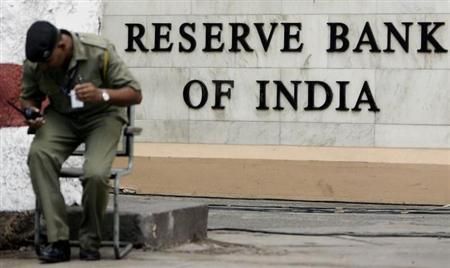 Strong focus on the banking sector and plenty of on-the-ground reforms are also required
Strong focus on the banking sector and plenty of on-the-ground reforms are also required
Several data points make it likely that the Reserve Bank of India will cut policy rates soon if it doesn't do so at the policy meeting in early April.
First, the Index of Industrial Production registered a negative year-on-year (y-o-y) change for January.
That was the third month in a row when the IIP had a declining trend.
The second point was declining consumer price inflation, as measured by the Consumer Price Index.
The CPI for February saw a y-o-y change of 5.18 per cent, lowest in four months.
It was below consensus estimates and an apparent improvement on the 5.69 per cent change in January. To reinforce the trend, the Wholesale Price Index registered a negative y-o-y change, for the 16th month in a row.
In addition, exports declined for a 15th successive month, with the rupee looking overvalued.
A combination of softer manufacturing data and lower inflation makes a rate cut very likely.
A cut could help pull the rupee down and, therefore, help exports as well.
However, the quality of data makes one cautious.
There are glaring anomalies with Indian data and that could lead to wrong policy prescriptions.
In earlier times, when Reserve Bank of India (and everybody else) relied on the WPI, policymakers would have been worried about deflation, rather than being thankful that inflation was reducing to reasonable levels.
As it stands, despite the unprecedented downtrend in Wholesale Price Index, inflation at the retail level remains substantial.
The methodology for calculation of real gross domestic product involves a WPI-based deflator.
Since services constitute more than 50 per cent of the economy and are driven far more by CPI-related prices.
The use of a WPI deflator might seem inappropriate.
It might introduce serious errors.
GDP is almost certainly inflated to some degree and as a result, calculations of ratios of GDP might also be out of whack.
There are also questions about computation of the IIP.
As several observers have pointed out, the current IIP sub-index (the actual index values as opposed to the y-o-y changes) for capital goods is at roughly the same levels as it attained in 2009.
While growth might have slowed, it has certainly not been static over a period of seven years.
The IIP must, therefore, be understated, and probably by a large amount.
If that is the case, it means we can't trust trends derived from studying the IIP and its changes, until we figure out where the problems lie.
The IIP’s extreme volatility also makes it difficult to trust it as an indicator.
Productivity doesn't vary from month to month across an entire economy in the extreme fashion the IIP indicates.
All this means that the monetary policy prescription could be wrong because the data it is based on is dubious or perhaps, outright wrong.
Nevertheless, we might as well brace for another rate cut, as it's almost certain to happen.
One immediate impact of a rate cut could be a surge in stockmarket valuations.
That would be knee-jerk.
It would also not be sustained for very long because it has already been discounted.
RBI has been cutting rates for the past year without much sign of growth stimulus and the market has taken note of the lack of effective results from those cuts.
India's banking system is in crisis, or on the edge of one, depending on the definition of crisis.
RBI has reduced the policy rate by a cumulative 125 basis points over 15 months.
Very little of that has been transmitted by banks and the public sector banks are struggling to keep their heads above water.
Under such circumstances, further cuts in the policy rate might not necessarily lead to the desired growth in credit.
In fact, bank credit this current financial year dropped to extreme lows, despite the rate cuts.
Most observers don't see a major revival in lending in 2016-17.
This is partly because companies aren't investing and partly because PSBs are more interested in recovering sticky loans than in extending new ones.
It will be a slow, organic process of recovery for the economy.
A rate cut will probably help the process along and the data, dubious as it may be, suggests a rate cut is the natural policy decision.
But, a rate cut would not be a panacea for all the ills that have befallen the economy in the past few years.
A strong focus on the banking sector is also required, as well as plenty of reform on the ground.











